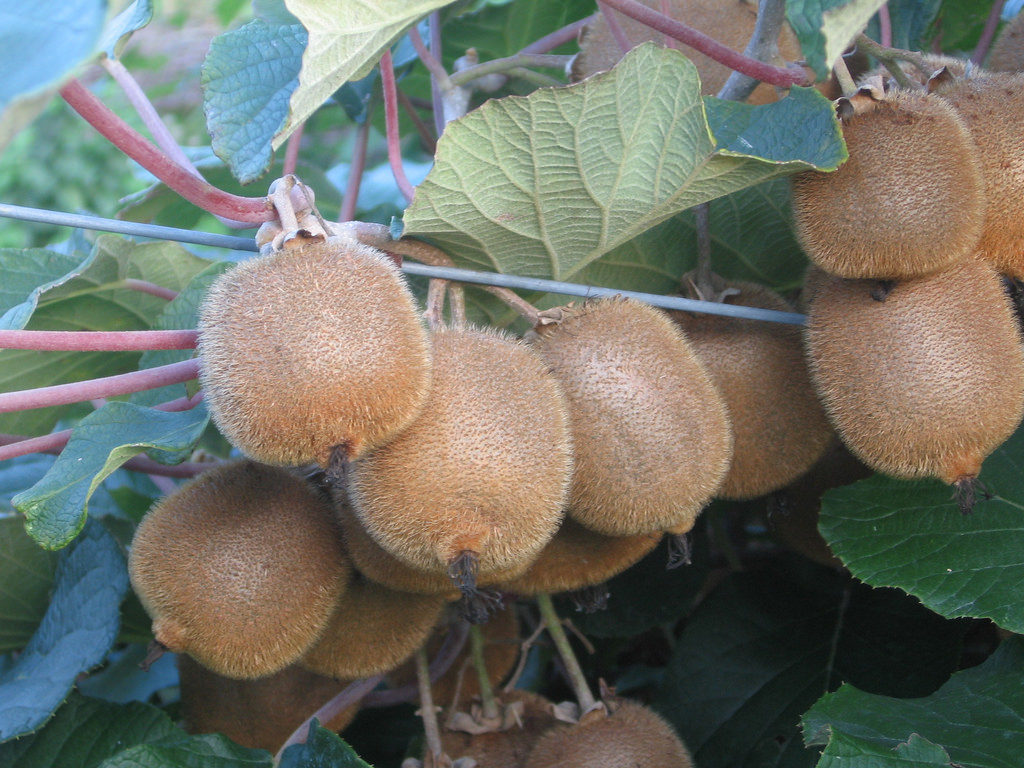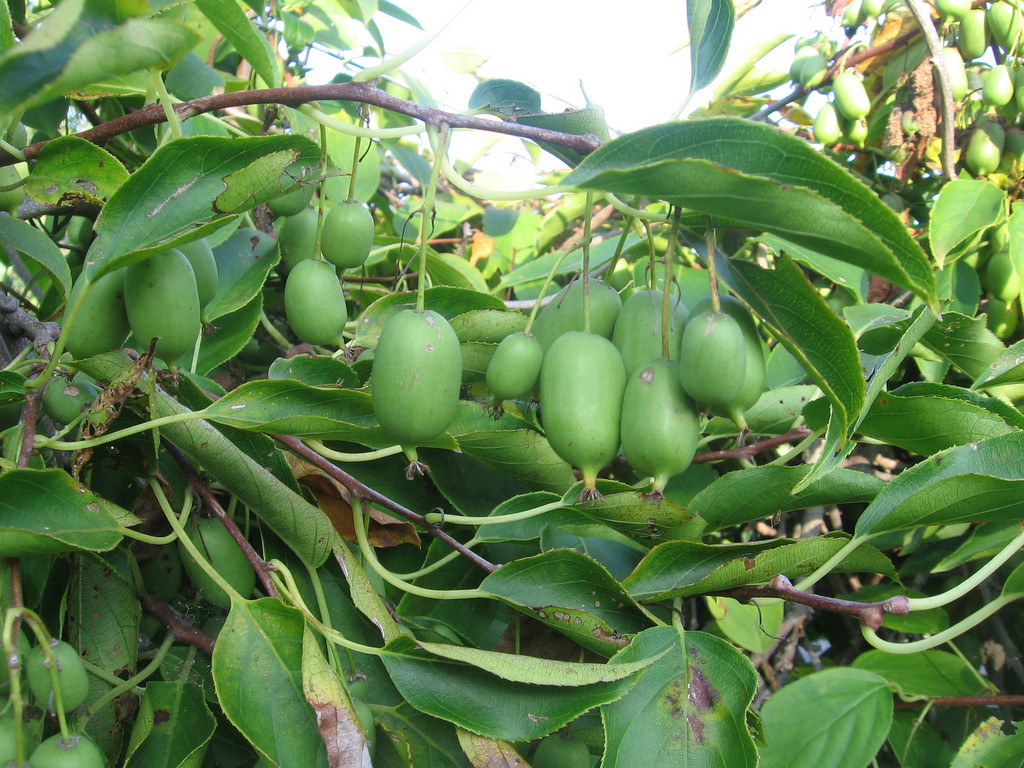If you have a good strong trellis, are a bit of a gambler and have a love of kiwifruit, there’s no reason not to grow your own crop. As vigorous as they are, though, don’t expect to plop these vines into the ground and stand back.
Kiwifruit need some attention to yield the large amount of fruit they’re capable of producing. Proper siting, fertilizing, watering and, most importantly, protecting from cold weather, are necessary to keep your plant in good shape, said Bernadine Strik, berry specialist for Oregon State University Extension Service.
There are three types of kiwifruit, Strik explained, the most common being the fuzzy kiwifruit (Actinidia deliciosa) available at the grocery store, usually the cultivar called ‘Hayward.’ Joining the lineup are hardy kiwifruit (A. arguta); and kolomikta kiwifruit (A. kolomikta), which is not often grown for fruit. Instead, gardeners become enamored of the variegated pink leaves and use it as an ornamental vine.
Hardy kiwifruit, also called kiwiberries because of the grape-sized fruit, are most suited for home gardens because they are best adapted to Oregon’s westside climate, she said. The highly aromatic fruit has smooth, green skin – sometimes with a red blush – that’s edible, making them great for snacking. Fuzzy kiwifruit don’t ripen on the vine and are harvested in fall when they are “green ripe.” They can be stored in a cold area for months, which is why they you’ll fine fuzzy kiwifruit in grocery stores year-round.
Fuzzy kiwifruit are best grown in warmer regions like California, because vines can get winter cold injury in most areas of Oregon. Hardy kiwifruit are better adapted to our region because they are very winter cold hardy and fruit will vine ripen from mid-September into mid-October. You’ll sometimes find them at farmers markets and some grocery stores.
Of the hardy kiwifruit, the easiest to find are ‘Ananasnaya,’ (sometimes called ‘Anna’) with jade-colored skin, bright green flesh, black seeds and a pineapple-type flavor (the name means “pineapple” in Russian) and ‘Ken’s Red,’ a New Zealand cultivar with olive green skin and darker green flesh with deep red streaks.
“The young shoots and fruit of all kiwifruit species are sensitive to frost injury,” Strik said. “Temperatures of 30 degrees or less for only 30 minutes can severely damage newly emerging shoots in the late winter through spring.”
To reduce the chance of damage, grow kiwi plants in warmer areas of the garden that are protected from frost, avoiding low areas or cool sites. When temperatures are forecast to drop to 32 or lower, drape the vine with row covers before sunset and remove them when temperatures rise above freezing.
Strik, who is the author of Extension’s publication Growing Kiwifruit, offers additional tips:
- Kiwifruit vines are either female, which produce the fruit; or male, which are vital for pollination and fruit production. Be sure to plant both unless a neighbor has a male.
- Build a substantial arbor or T-bar trellis (a diagram is included in the above publication) that’s tall enough to stand under for harvest; the stronger the better since the vines can grow 15 feet wide and produce up to 100 pounds of fruit.
- Plant 10 to 15 inches apart in spring in deep, well-drained soil in a sunny, protected area of the garden. Don’t skimp on this advice since kiwi vines are susceptible to root rot.
- Water a couple of inches of water a week during the growing season. A drip system works best.
- Fertilize with about ½ pound of nitrogen per mature vine, dividing this into thirds (mid-March, mid-April and mid-June) using a well-balanced fertilizer such as 16-16-16 (3 pounds per season) or soybean meal (about 7 pounds per season).
- Prune females heavily in December. If it gets later in the season, the vines will excrete large amounts of sap, which dismays gardeners. “I often get people saying, ‘My vine is bleeding to death,’” Strik said. “So, it’s best to prune early. If you are pruning late, don’t worry too much about the sap loss.” Prune males after bloom in late June. When pruning a mature vine, remove about 70 percent of the wood that grew last season. Most of the wood removed is older wood that already has fruited. See the publication for pruning diagrams.
- In warmer regions of Oregon harvest fuzzy kiwifruit in late October to early November when they are still hard, but the seeds are black. They can be stored in a cold (32 to 40 degrees) area for several months. To ripen small amounts, put in a slightly vented plastic bag with apples or bananas. Harvest hardy kiwifruit, which do not all ripen at the same time, when they are soft to the touch. They should be eaten right away; or in order to store in the refrigerator for a few weeks, harvest fruit when they are still firm, but seeds are black (early September). When they are too ripe, the fruit will tear at the stem end. You can enjoy them throughout the winter by freezing them and letting them partially thaw before eating.

2 thoughts on “Expert tips for growing kiwifruit”
Comments are closed.


Thanks! And thanks for sharing your great posts every week!
Glad you’re enjoying them. If there’s every a subject you’d like to see covered, let us know!